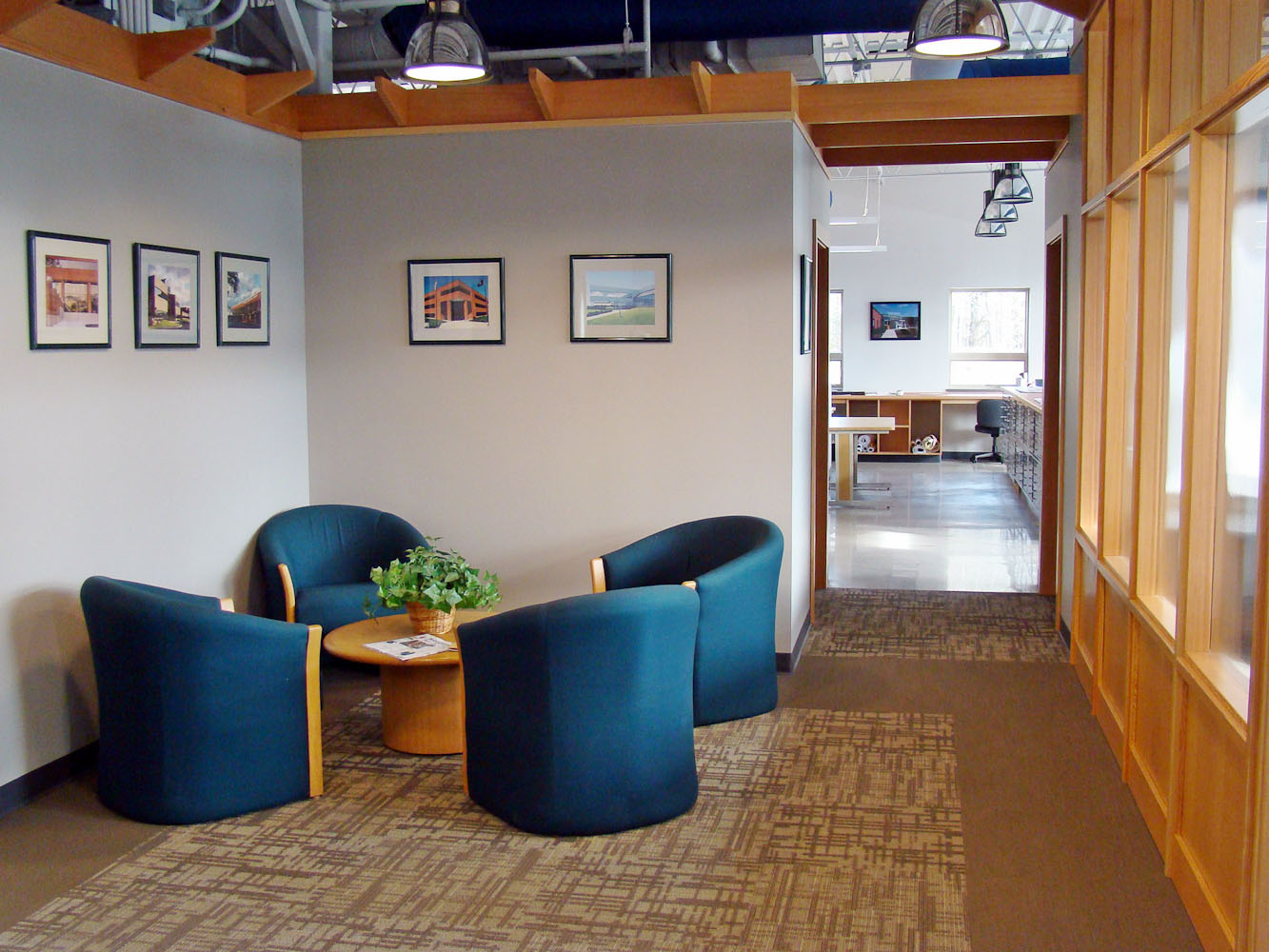

Wiemann Lamphere Architects decided it was time to design a space to suit their own needs. In spring of 2009 we broke ground on our new 10,600 sf. office building. The building is expecting to achieve LEED C&S Silver certification. WLA made many improvements to the site including preparing for a future PV array, and storm water improvements for this building and Phase II, an additional 10,000 sf. building.
On the inside we created a variety of spaces: open offices, private offices, conference rooms, libraries, and service areas like our plotter room. Each space serves a unique function and purpose.
We arranged our spaces to maximize natural light into our conference and open office areas. An integral light shelf reflects natural light deep into the spaces. This coordinated with light, motion, and audible sensors allows us to use less artificial light saving energy and improving the feel of the space.
Our office implements sustainable practices all over the building. Our HVAC system uses heat recovery units, air source heat humps, natural gas boilers, and high efficiency filters trapping over 90% of particles. This in combination with low or no off-gassing materials like our polished concrete floor, tile, and no-VOC paint give occupants the best possible air to breathe. Many of the materials and finishes come from local sources like Vermont brick and Hinesburg Gravel concrete ad-mix. We used materials with high recycled content like cellulose insulation and recycled steel. We reused materials where possible like our system furniture, book cases, conference and lobby furnature, as well as computer systems. We implemented low-flow water fixtures in our bathrooms, shower, and kitchen. And also picked landscaping that required no irrigation once established.
In December 2010 WLA added our 10kW photovoltaic array. The solar panels were paid for in part by a grant from the USDA's Rural Energy for America Program. Each array has 16 panels and is seasonally adjustable to maximize the amount of energy they create. The panels were installed by Alteris Renewables, a company founded in Vermont with over 30 years of experience. The PV array is net-metered meaning excess power is stored in the local grid for later use. Annually the panels should provide about 1/3 of our power requirements.
Creative Sustainable Solutions
WLA OFFICE BUILDING
copyright © 2024 Wiemann Lamphere Architects, 525 Hercules Drive, Suite 2, Colchester, VT 05446 802 655 5020
